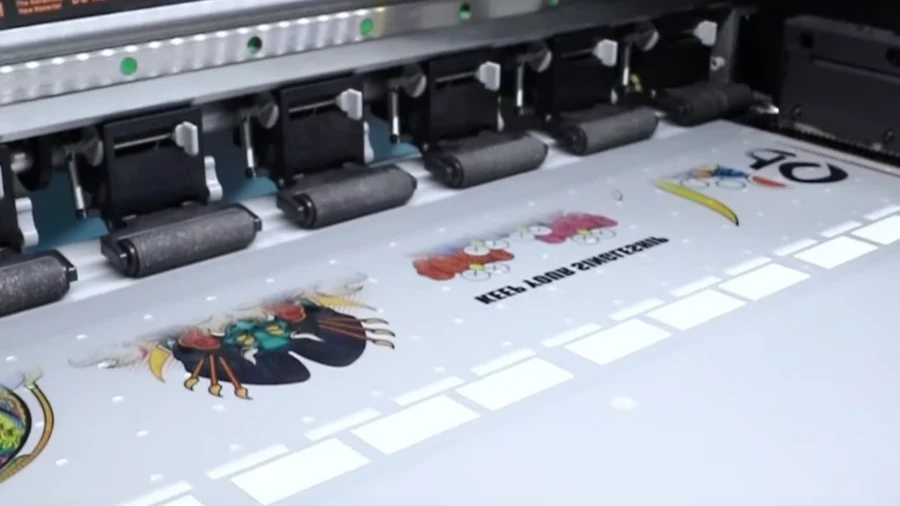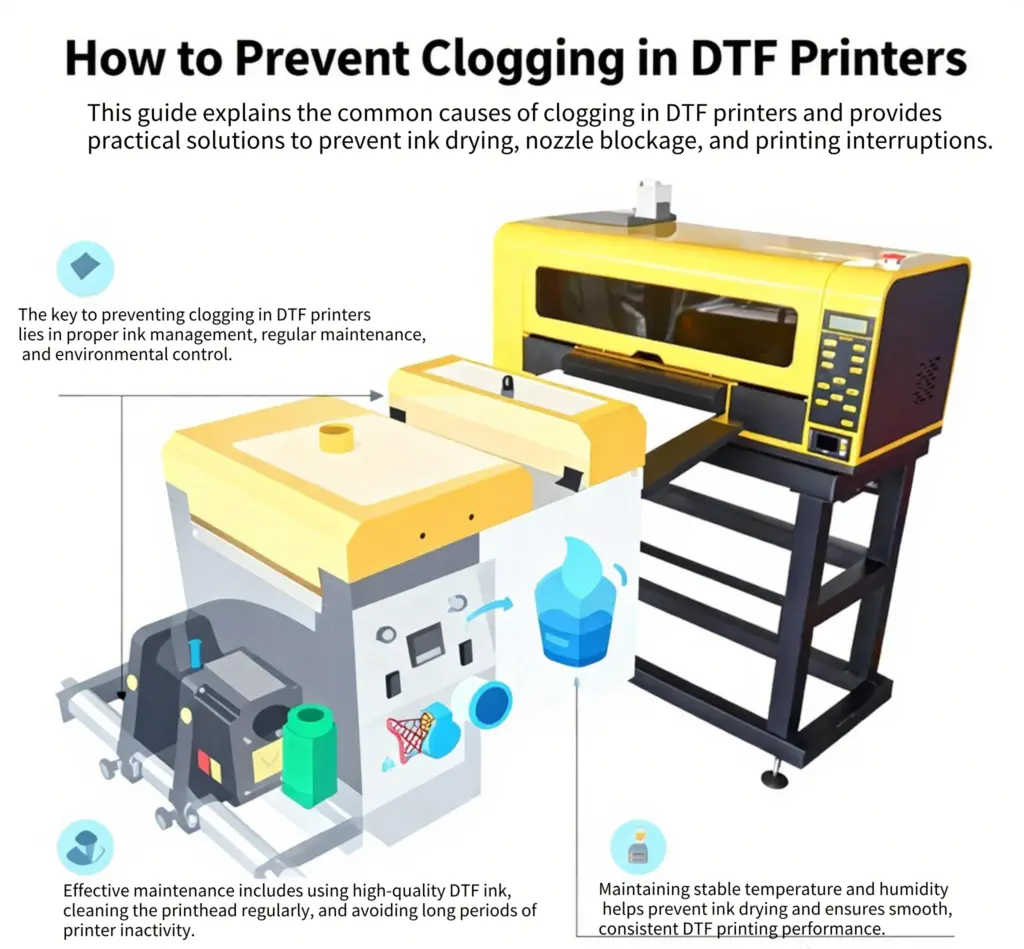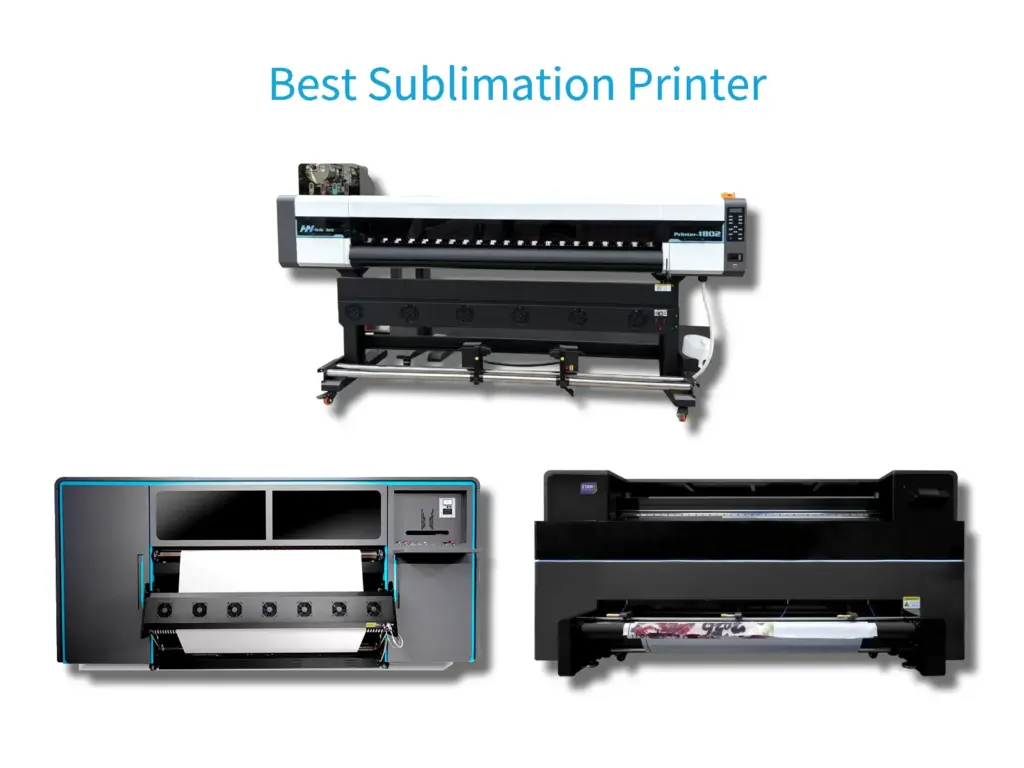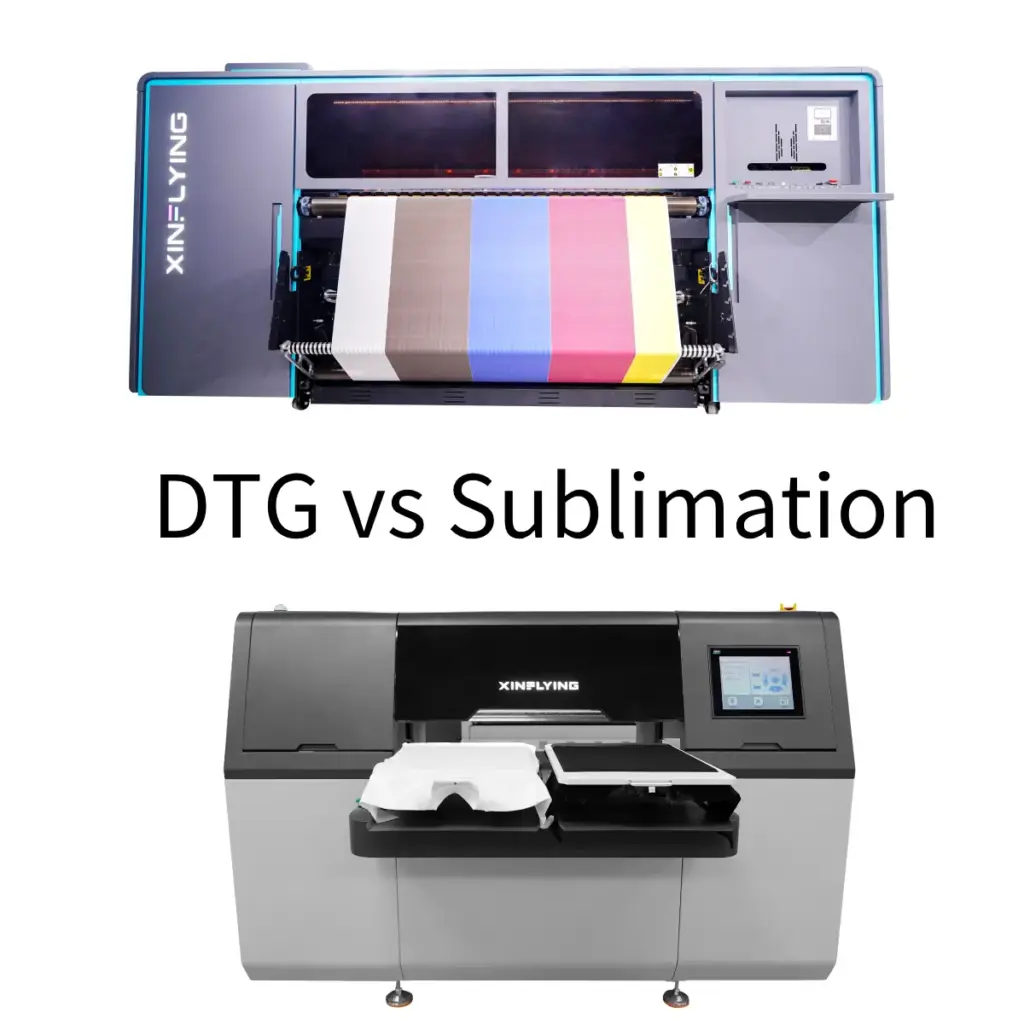Vì thế, bạn tò mò về việc in DTF và những gì cần thiết để bắt đầu? Bạn đã đến đúng nơi! Trực tiếp tới phim (DTF) in ấn là người thay đổi cuộc chơi trong thế giới in tùy chỉnh, mang lại tính linh hoạt và kết quả tuyệt vời trên các loại vải khác nhau. Nhưng chính xác thì bạn cần những gì để đi sâu vào quy trình in DTF? Hãy chia nhỏ nó ra từng bước một.
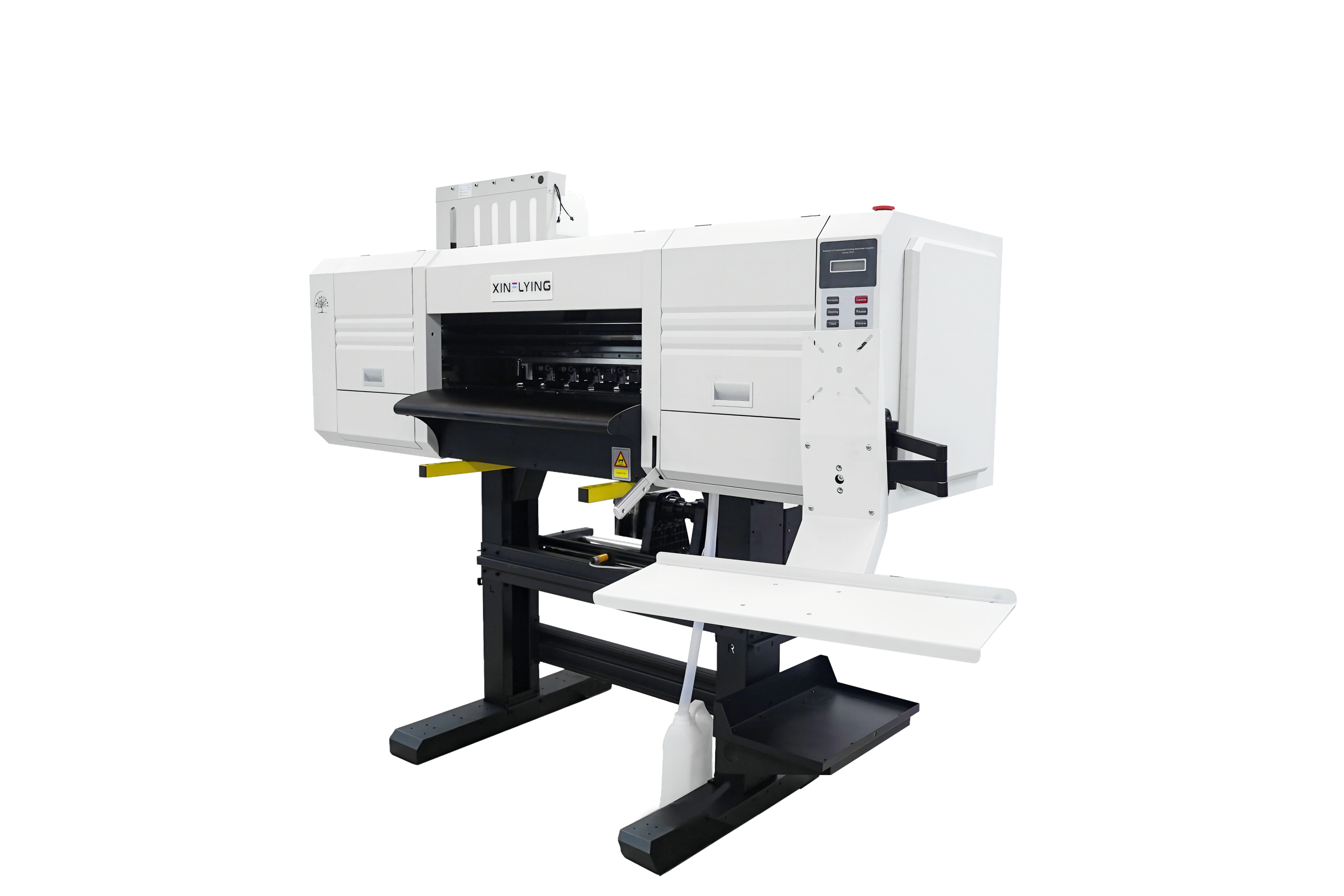
Máy in DTF
Điều đầu tiên trước tiên, bạn cần một máy in DTF chất lượng cao. Máy in chuyên dụng này được thiết kế để xử lý các yêu cầu đặc biệt của in DTF, chẳng hạn như in trên phim thay vì vải truyền thống. Khi chọn máy in DTF, tìm kiếm các tính năng như độ phân giải cao, đầu ra màu sắc rực rỡ, và khả năng tương thích với nhiều loại mực khác nhau. Một chiếc máy in tốt là nền tảng để tạo ra những sản phẩm sắc nét, hình ảnh chi tiết nổi bật.

Phim DTF
Tiếp theo là phim DTF, một thành phần quan trọng trong quá trình in ấn này. Bộ phim đóng vai trò là chất mang cho thiết kế của bạn, cuối cùng sẽ được chuyển lên vải. Đảm bảo sử dụng màng DTF chất lượng cao có thể chịu được nhiệt và áp suất của quá trình truyền mà không bị suy giảm chất lượng. Điều này đảm bảo rằng thiết kế của bạn vẫn sắc nét và rõ ràng khi áp dụng cho sản phẩm cuối cùng.
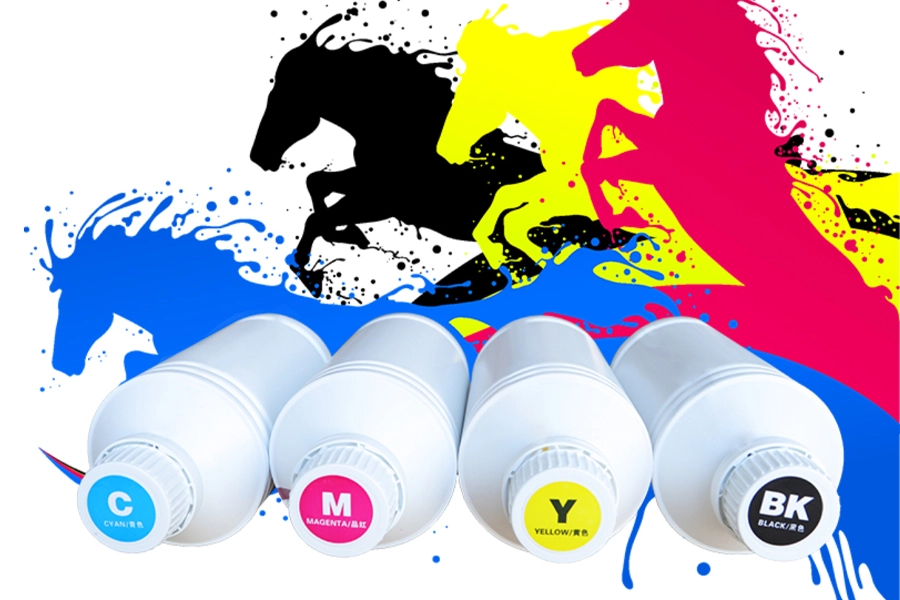
Mực DTF
Mực là nơi điều kỳ diệu xảy ra. mực DTF được chế tạo đặc biệt để bám dính vào màng và sau đó là vào vải. Bạn sẽ cần một bộ mực CMYK, và thường là mực trắng, tạo nên sự sôi động, bản in đầy màu sắc. Chất lượng mực có thể tạo nên hoặc phá vỡ thiết kế của bạn, vì vậy hãy đầu tư vào những thương hiệu uy tín mang lại tính nhất quán và độ bền.
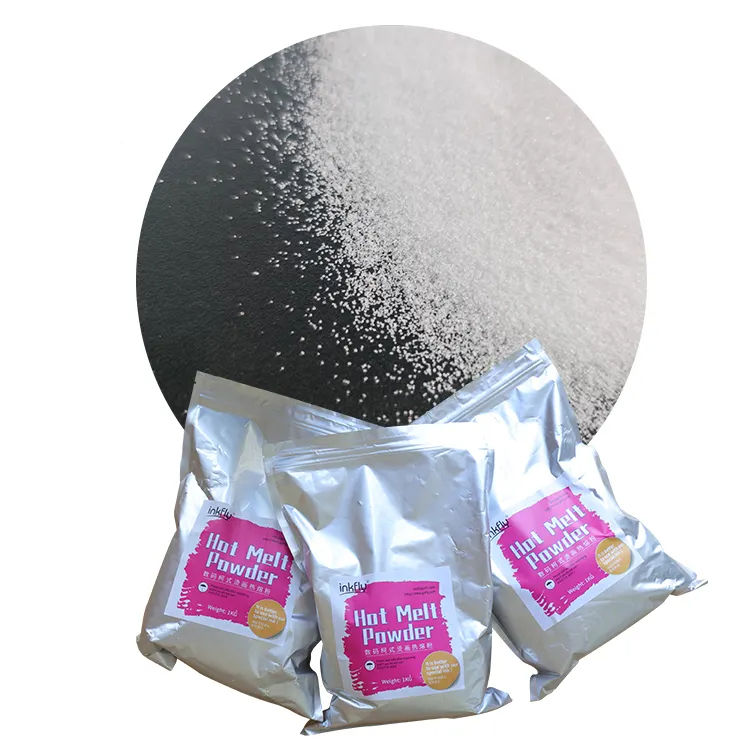
Bột nóng chảy DTF
Bột nóng chảy DTF là nước sốt bí mật đảm bảo các bản in của bạn dính vào vải. Sau khi in thiết kế của bạn lên phim, bạn rắc bột này lên mực ướt. Bột DTF tan chảy trong quá trình ép nhiệt, liên kết mực vào vải. Điều cần thiết là sử dụng bột chất lượng cao để tránh các vấn đề như độ bám dính kém hoặc kết cấu thô trên bản in cuối cùng của bạn.
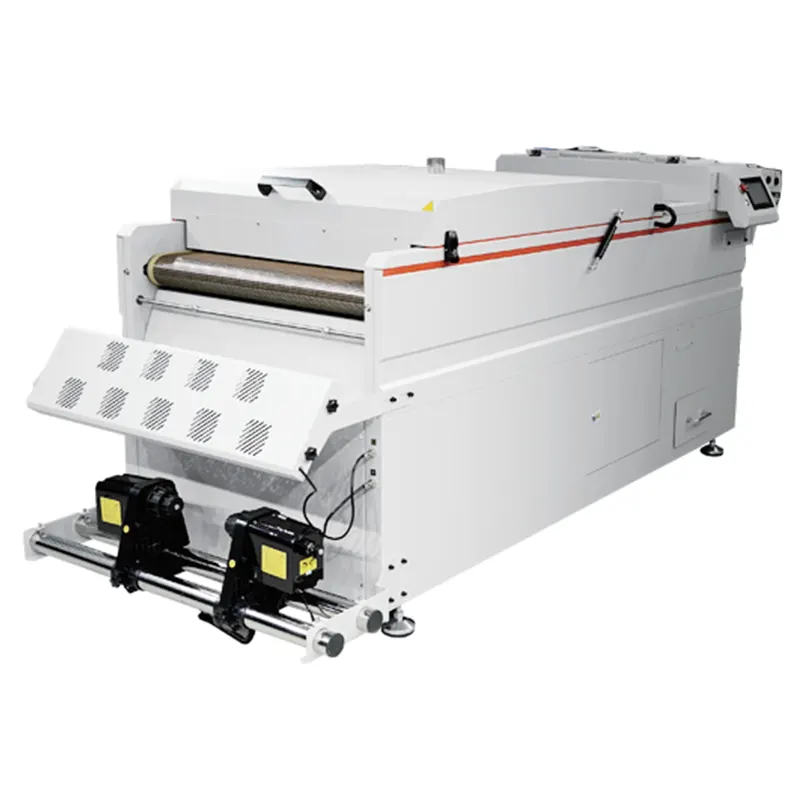
Máy lắc bột DTF
Dành cho những người muốn mở rộng quy mô hoạt động của mình, máy lắc bột DTF là thứ bắt buộc phải có. Máy này tự động hóa quá trình thoa và rũ bỏ bột thừa, đảm bảo phủ sóng đều và giúp bạn tiết kiệm thời gian. Đó là một khoản đầu tư xứng đáng nếu bạn đang xử lý khối lượng bản in lớn hơn và muốn duy trì tính nhất quán và hiệu quả.
Máy ép nhiệt
Máy ép nhiệt là mảnh ghép cuối cùng. Sau khi thiết kế của bạn được in trên phim và phủ bột nóng chảy, bạn chuyển nó vào vải bằng máy ép nhiệt. Máy sử dụng nhiệt và áp suất cần thiết để liên kết mực và bột với vải vĩnh viễn. Chọn máy ép nhiệt cho phép kiểm soát nhiệt độ và áp suất chính xác để đảm bảo kết quả tốt nhất.
Phần mềm RIP
XÉ (Bộ xử lý hình ảnh raster) phần mềm rất cần thiết để quản lý và tối ưu hóa các tệp in của bạn. Phần mềm này dịch thiết kế của bạn sang định dạng mà máy in có thể hiểu được, đảm bảo tái tạo màu sắc chính xác và sử dụng mực hiệu quả. Nó cũng cho phép bạn điều chỉnh các cài đặt như cấu hình màu và chất lượng in, cho phép bạn kiểm soát tốt hơn kết quả cuối cùng.

Hướng dẫn từng bước cho quy trình in DTF
Bây giờ chúng ta có tất cả các thành phần, Hãy cùng tìm hiểu quy trình từng bước của DTF:
- Sáng tạo thiết kế: Bắt đầu bằng cách thiết kế tác phẩm nghệ thuật của bạn bằng phần mềm thiết kế đồ họa. Đảm bảo thiết kế của bạn phù hợp với kích thước của phim DTF.
- In trên phim: Nạp phim DTF vào máy in DTF chất lượng cao của bạn và in thiết kế của bạn. Đảm bảo bao gồm một lớp mực trắng nếu thiết kế của bạn yêu cầu.
- Thoa bột nóng chảy: Khi mực còn ướt, rắc đều bột nóng chảy DTF lên thiết kế. Sử dụng máy lắc bột DTF để phủ đều bột nếu có.
- Chữa bột: Làm nóng máy ép nhiệt của bạn ở nhiệt độ khoảng 160°C (320° f) và di chuột qua màng để xử lý bột mà không cần nhấn. Điều này đảm bảo bột tan và bám vào mực.
- Truyền nhiệt: Đặt màng đã xử lý lên vải của bạn, sau đó ép nó bằng máy ép nhiệt ở khoảng 160°C (320° f) vì 15-20 giây. Sử dụng áp lực vững chắc để đảm bảo độ bám dính thích hợp.
- Gọt vỏ và kết thúc: Để vải nguội, sau đó bóc màng nhẹ nhàng. Thiết kế của bạn bây giờ sẽ được chuyển đẹp mắt lên vải.
Phần kết luận
Bước vào thế giới in DTF ban đầu có vẻ khó khăn, nhưng với thiết bị phù hợp và một chút luyện tập, bạn sẽ nhanh chóng tạo ra những bản in chất lượng chuyên nghiệp. Từ máy in DTF chất lượng cao đến máy lắc bột DTF cực kỳ quan trọng, mỗi thành phần đóng một vai trò quan trọng trong quá trình in dtf. Chúc bạn in ấn vui vẻ!
Câu hỏi thường gặp về In DTF
1. Tôi có thể sử dụng loại vải nào khi in DTF?
In DTF rất linh hoạt và hoạt động trên nhiều loại vải, bao gồm bông, polyester, và pha trộn.
2. Máy lắc bột DTF cải thiện quy trình in ấn như thế nào?
Máy lắc bột DTF đảm bảo ứng dụng đều bột nóng chảy, tiết kiệm thời gian và nâng cao tính nhất quán trong bản in của bạn.
3. Tôi có thể sử dụng mực thường với máy in DTF của mình không?
KHÔNG, bạn cần loại mực DTF chuyên dụng được thiết kế để hoạt động với màng và bám dính đúng cách vào vải.
4. Mục đích của phần mềm RIP trong in DTF là gì?
Phần mềm RIP tối ưu hóa các tập tin in của bạn, đảm bảo tái tạo màu sắc chính xác và sử dụng mực hiệu quả, dẫn đến bản in chất lượng cao hơn.
5. In DTF có phù hợp với doanh nghiệp nhỏ không?
Tuyệt đối! In DTF hoàn hảo cho các doanh nghiệp vừa và nhỏ do tính linh hoạt của nó, dễ sử dụng, và khả năng tạo ra các bản in chất lượng cao theo yêu cầu.

